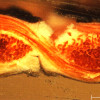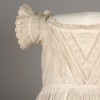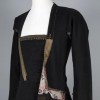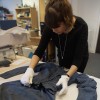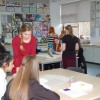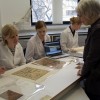Tapestry monitoring project

by Frances Lennard, Senior Lecturer in Textile Conservation. We are very excited to have begun a new research project in collaboration with Historic Scotland. A camera has been installed in the Queen’s Inner Hall at Stirling Castle to take time-lapse images of the newly woven tapestry, The Mystic Hunt of the Unicorn. The unveiling of the… Continue reading



